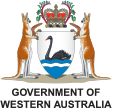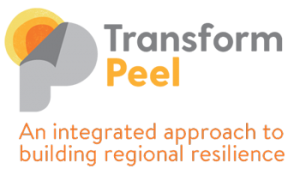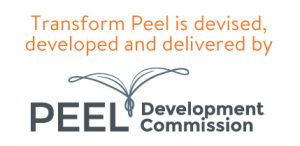Transform Peel is the perfect vehicle to demonstrate the importance of Royalties for Regions, and the Western Australian Government’s vision for WA. Transform Peel is strongly aligned with the Labor Government’s ‘Plan for Peel’ to develop the Peel Business Park, the Peel Food Zone, and its year round sustainable water supply secured through the Peel Integrated Water Initiative that will also reduce nutrient run off into the Peel-Harvey Estuary by 50%.
In fact, since detailed scoping commenced the designated Food Zone has grown from its original 28,000 ha to 40,000 ha and could reach a potential as high as 60,000 ha. It seems everyone wants to participate in Transform Peel!
How will we secure the non-seasonal water supply?
Water security will be a vital part of the growing agricultural industry in the Peel region. The Peel Development Commission is working with the Department of Water and the Shire of Murray to investigate options to make the most of this valuable natural resource while preserving the environmental values of the region.
One of these options is a managed aquifer recharge, or MAR. This involves capturing winter rainfall and storing it underground in the natural aquifer system for use in summer. Over the coming months, we will be drilling into the aquifer system to a depth of around 300m to study the conditions and assess the risks associated with this option. The study site will be just off Lakes Road in Nambeelup, within the Peel Business Park site.
How do you design a Food Zone?
The Department of Agriculture and Food (DAFWA) is working with the Peel Development Commission to plan the future development of the Peel Food Zone. An important first step is understanding the constraints within the 40,000 ha precinct so that future food production can be developed in the most suitable areas. Constraints include soil types, flood risk, internet connectivity, ground water availability, land zoning and environmental sensitivities. The DAFWA scoping study is considering six agricultural development scenarios suited to areas within the Peel Food Zone, namely:
# Perennial horticulture such as grape vines and fruit trees
# Irrigated in-ground annual horticulture such as leafy vegetables
# Closed system horticulture including glasshouses with hydroponics
# Covered annual horticulture such as strawberries in tunnel houses
# Dry land pastures for grazing animals
# Intensive closed system animal production such as poultry
DAFWA has collaborated with engineering consultants GHD to map out the most suitable locations for each of the six development scenarios within the Peel Food Zone. Sophisticated analytical tools have been deployed to produce maps for consideration by stakeholders. The first drafts of these maps were tested with key stakeholder groups at a workshop in Keysbrook on 5 April, with resulting feedback to be used to refine the mapping products. Over the next few months, the final maps and other reports will be available for discussion with a wide range of potential investors, agri-stakeholders and the Peel community.
How will the Peel Business Park be unique?
The eventual design of the Peel Business Park in Nambeelup will depend on the needs of the businesses who lease it. Landcorp has opened Expressions of Interest and their agents CBRE are meeting with potential tenants. More information can be found at: www.landcorp.com.au/PeelBusinessPark
How can I find out more?
Please visit our website to read about the program, projects, partners and future initiatives, and register your interest in participating in Transform Peel. You can also ‘like’ Transform Peel and Peel Development Commission on Facebook and follow us on Twitter to share our progress. These links are on our websites.
Linda & David
Transform Peel Program Management Office


